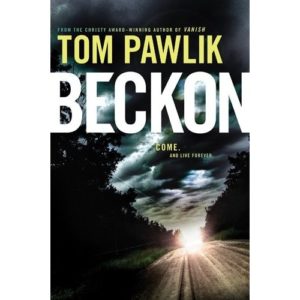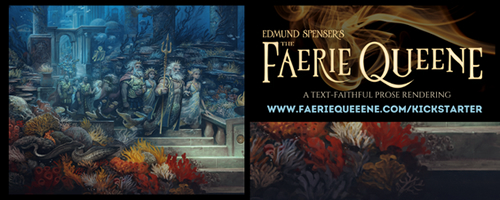Writer’s Block?
 Tom Pawlik is the highly imaginative, Christy Award-winning author of Vanish, Valley of the Shadow, Beckon, and the novella Recollection from the 7 Hours anthology. His thought-provoking, edge-of-your-seat thrillers are infused with nonstop suspense that grabs you on the first page and won’t let go until the last.
Tom Pawlik is the highly imaginative, Christy Award-winning author of Vanish, Valley of the Shadow, Beckon, and the novella Recollection from the 7 Hours anthology. His thought-provoking, edge-of-your-seat thrillers are infused with nonstop suspense that grabs you on the first page and won’t let go until the last.
– – – – –
I’m sitting in my room on the 22nd floor of the Westin Bonaventure hotel in downtown Los Angeles after a long day at a science expo (part of my day job). It’s nearly midnight and I have to get this blog article written and submitted in twenty-four hours.
But I have absolutely no idea what to write.
So I decide—after fruitlessly perusing the internet—to just start typing and see what comes out. I figure if I get my fingers moving, maybe it will stimulate some part of my brain to fire the proper neurons and create an idea.
Then it hits me… where do ideas come from in the first place? Are they simply chemical reactions inside the brain? Neurons firing at random, sending random signals along random pathways in the cerebral cortex until… voila! To Kill A Mockingbird.
Or is there an incorporeal element involved? Some type of spiritual activity—call it inspiration—that precedes and even initiates the neurological response? Is this perhaps the mark of God on the human race? Part of our Imago Dei?
Either way, it’s the heart of storytelling.
It’s a heady thought (pun intended), that some mixture of immaterial and chemical reactions in your brain can lead to a book or a blog that gets read by someone half way around the world.
For example, if I write the following sentence: a young widow follows clues left behind by her husband that lead her to discover a mysterious black box hidden in his office… does that idea send the same signals through your brain as it did in mine when I thought of it?
Like copying a file from one computer drive to another, that little snatch of neurons firing in my brain cells, is transformed into nerve signals that direct my fingers to type a specified pattern of l-e-t-t-e-r-s on my keyboard which then get transmitted as binary code in an email to Rebecca Miller who then posts it on a blog which you read and transform them back into chemical signals that move up your optic nerves into your brain where they get interpreted into a neural pattern that elicits a psycho-emotive response. Hopefully one that piques your curiosity.
But then why are some ideas better than others? Is it that some neural patterns are objectively more evocative than others? Does norepinephrine generate more interesting concepts than serotonin? Or are they affected by the time of day, or one’s location or mood? For instance, right now I might think these thoughts are very thought-provoking but when I read them again in the morning, I may think they’re perfectly horrid and you’ll never even know I ever wrote them because I decided not to submit them to Rebecca. Or maybe I did submit them, but something got messed up in her neurons to make her think this article was absolute rubbish and she refused to post it. Who knows?
Regardless, this is one of the things that makes us different from the rest of the animal kingdom. Our creativity.
Other animal species may have developed forms of communication, but so far as we know only humans engage in storytelling. Only humans demonstrate the ability to think abstractly, to manufacture characters and plots designed to create an emotional response in the minds of an audience, making them contemplate their world, their relationships, or their own mortality. This is something uniquely human. Something for which scientists have not found a satisfactory Darwinian explanation.
Now that’s food for thought.
– – – – –
Learn More About The Author.
 Tom’s fascination with the weird, the creepy and the unknown began at a very early age when he was introduced to a bizarre 19th century German story book called “Der Struwwelpeter”. The book was a collection of nightmarish morality tales by a German physician who obviously had too much time on his hands and no children of his own. The morbid nursery rhymes–sort of a Mother Goose meets Stephen King–included the frightful “Daumenlutscher” (Thumbsucker), a disturbing yarn about a young boy who was warned that if he continued to suck his thumbs, the local tailor would chop them off with his sewing shears. Other tales warned against playing with matches and being overly messy. Needless to say Tom never played with matches, generally kept his room clean and to this day retains the use of both his thumbs.
Tom’s fascination with the weird, the creepy and the unknown began at a very early age when he was introduced to a bizarre 19th century German story book called “Der Struwwelpeter”. The book was a collection of nightmarish morality tales by a German physician who obviously had too much time on his hands and no children of his own. The morbid nursery rhymes–sort of a Mother Goose meets Stephen King–included the frightful “Daumenlutscher” (Thumbsucker), a disturbing yarn about a young boy who was warned that if he continued to suck his thumbs, the local tailor would chop them off with his sewing shears. Other tales warned against playing with matches and being overly messy. Needless to say Tom never played with matches, generally kept his room clean and to this day retains the use of both his thumbs.
But the psychological damage was already done, and Tom’s warped imagination turned him to writing his own creepy stories at a rather young age. Alas, no publishers were brave enough to bring his stories to print, so Tom would not realize his life-long dream of becoming a published author until the ripe old age of forty-two. Today, Tom lives in Ohio and is happily married with six children of his own… who, oddly enough, never sucked their thumbs.










































